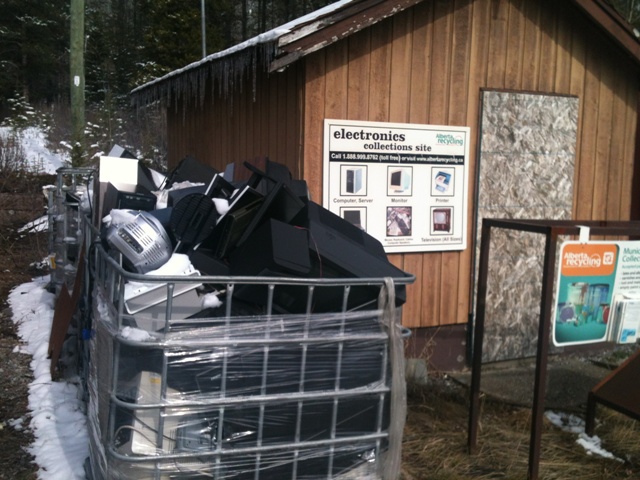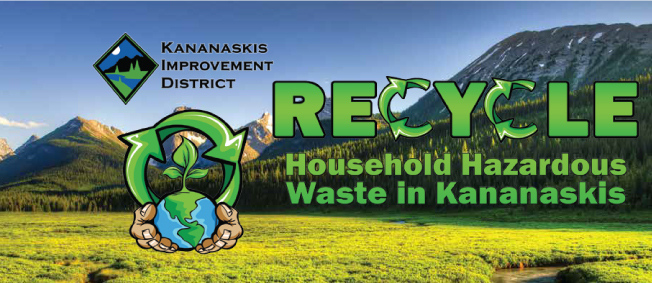Household Hazardous Waste Program
Certain household products may be flammable, corrosive, explosive or toxic and, as such, should not be disposed of in landfills or sewage systems. Proper handling and disposal of these products will help prevent harm to people or the environment.
The KID is pleased to offer residents and ratepayers a free, year-round disposal service for household hazardous wastes. Simply bring your household hazardous wastes to the Kananaskis Emergency Services Centre for free disposal between the hours of 9:00 am and 4:00 pm. Common materials brought for disposal include abrasive cleaners, paint, batteries, old fuel, kerosene, medications, solvents and weed killers. A complete list is available at the Kananaskis Emergency Services Centre.
If you would like to drop hazardous waste material off, please call the Duty Officer number at 403-678-8331 in advance of coming to the Kananaskis Emergency Services Centre. The Duty Officer will be able to confirm whether or not the materials you would like to drop off fall within the parameters of the program. The best days to drop off are Thursday to Sunday.
In 2023, KID recycled:
Toxic Products – 33 kg
Corrosive Products – 132 kg
Pesticides – 0
Flammable Products – 35 kg
Aerosols – 61 Cans
Paint Aerosols – 937 Cans
Batteries – Lead/Acid – 145 kg
Click on the brochure below to read all the info!
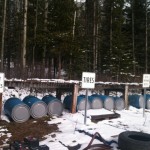 |
 |
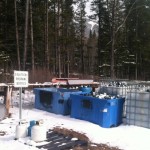 |
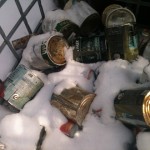 |
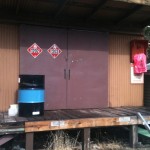 |
 |
What are Household Hazardous Wastes?
Potentially hazardous household products display one or more of the following warning symbols:

Flammable: These are wastes that burn easily like painting wastes, degreasers, and other solvents.

Corrosive: These wastes will eat away surfaces and skin. Familiar
examples are waste acids, rust removers, alkaline cleaning fluids, and
old battery acid.
 Reactive/Explosive: These are wastes that react violently when mixed
with other chemicals or that react under pressure or heat, such as
aerosols.
Reactive/Explosive: These are wastes that react violently when mixed
with other chemicals or that react under pressure or heat, such as
aerosols.
Toxic/Poison: These are substances that can poison or cause damage to
living organisms. Materials containing heavy metals like mercury, lead
or cadmium are toxic.
Some Precautions
Please keep all materials in their original containers where possible. If a container is cracked or broken, place it in a leak-proof package and label it. If you find jars or cans of unidentified or unknown chemicals, bring them to the collection site and tell a staff person that you don’t know what’s inside. Also, include any container printed with product warning symbols, precautions about the product’s use, or instructions on disposal of the container.
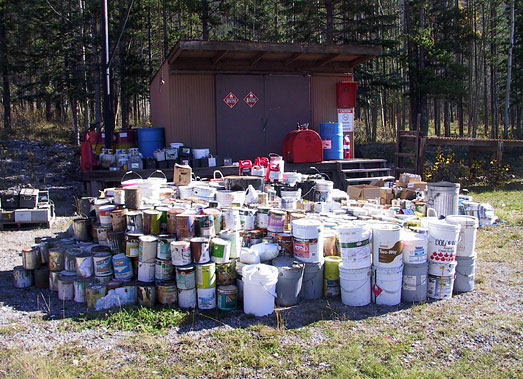
Electronics Recycling
In 2004, more than 190,000 televisions and 90,000 desktop computers were discarded from Alberta households. These appliances contain materials such as lead, mercury, cadmium, beryllium and PVC plastics that can cause significant environmental and health risks if they end up in landfills. However, the metals, glass and plastic in these products can be recycled into valuable products, including the next generation of electronics.
As of October 1, 2004, televisions, computers and related equipment that were going into Alberta’s landfills began to be collected, reused, recycled and turned into new products and economic opportunities for Albertans.
